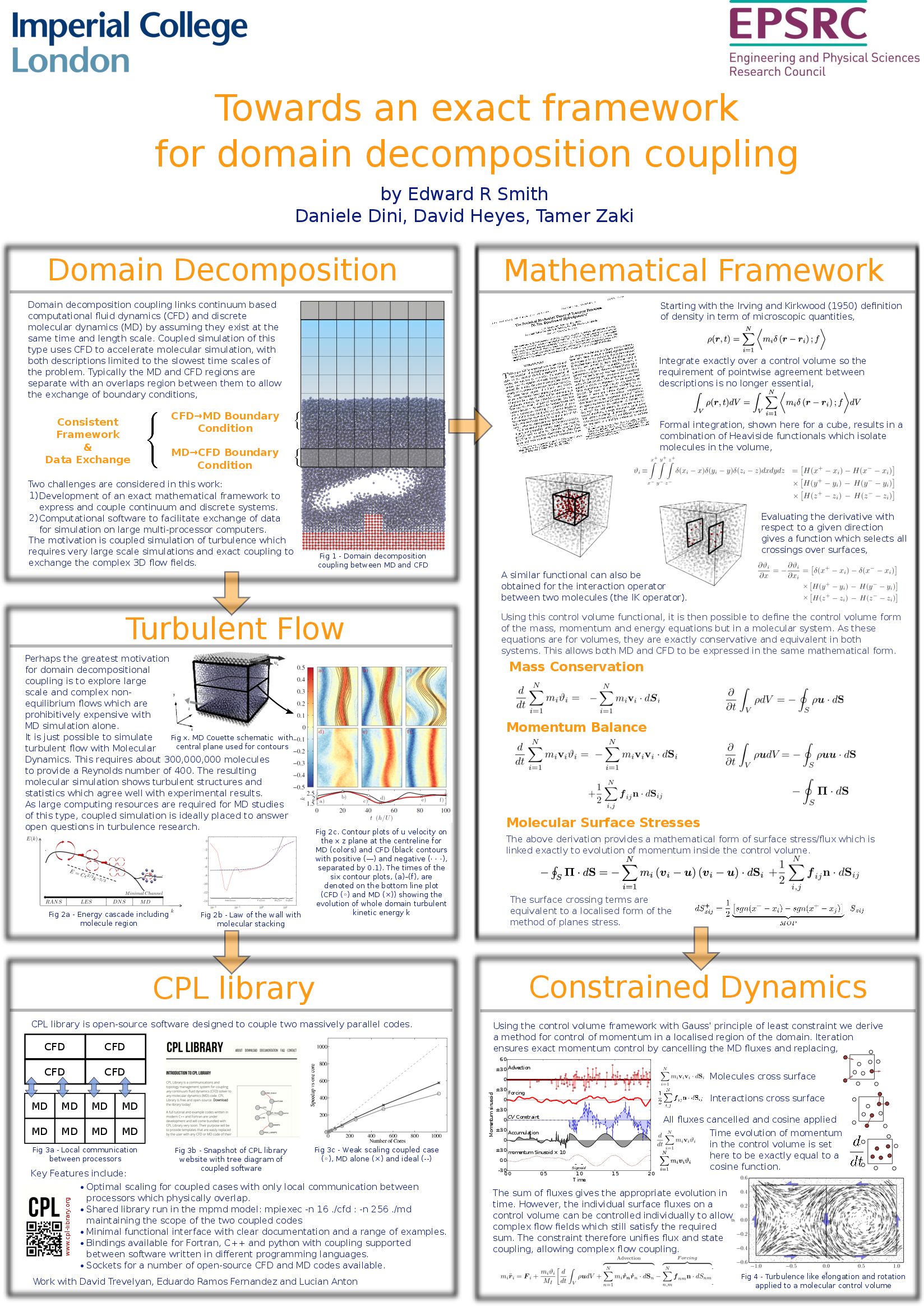Coupled Simulation
Computer simulation of fluid flow is a vital tool in modern engineering, indispensable in many sectors including oil and gas, aerospace, biomedical and renewable energy. The central assumption of engineering simulation is the continuum hypothesis, which removes molecular detail from the problem. However, this assumption is no longer valid in the increasingly vital field of micro and nano-scale research. As technology gets smaller, there is a desperate need for improved modelling tools at these scales. Molecular dynamics provides a more fundamental model of reality. Often the key behaviour is uniquely captured by modelling the molecular system, such as the cooling of the nano-scale surface of a CPU; the movement of the contact line between a solid, liquid and gas; the explicit detail of the functional geometry of complex molecules or the irreducible molecular complexity of a biological cell membrane.
However, molecular dynamics is computationally expensive and limited to very small systems. The solution: couple the two descriptions; including molecular detail only where it is needed, in a wider engineering simulation. It is this extremely promising field of coupled simulation that my work aims to further. This combines the development of a theoretical rigourous underpinning for coupled simulation with software design to facilitate the trivial inclusion of molecular detail in engineering simulation. The aim is to make coupled multi-scale models a powerful tool for engineering design.
The process of developing an exact coupling requires,
- a consistent mathematical framework, in terms of the Control Volume Formulation
- The molecular system must be constrained and this is done based on the minimisation formulations of mechanics, the most fundamental guiding principles in physics, Constrained Dynamics
- Software to link it all together, CPL library
This is summarised in the poster below,

Please see this link to download as vector graphic.